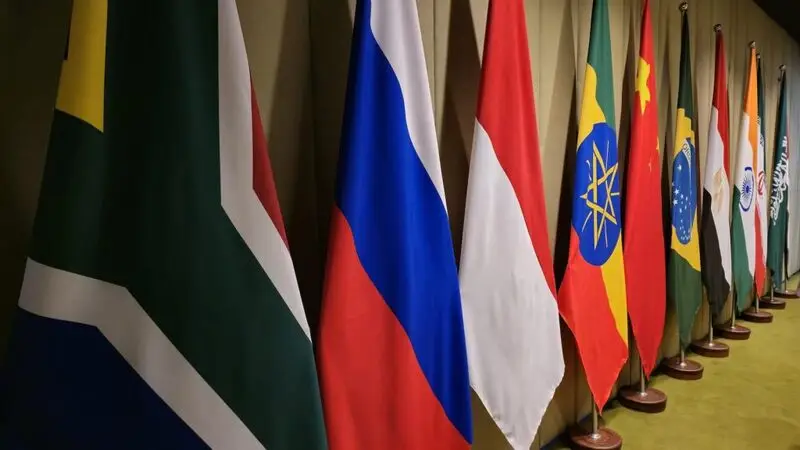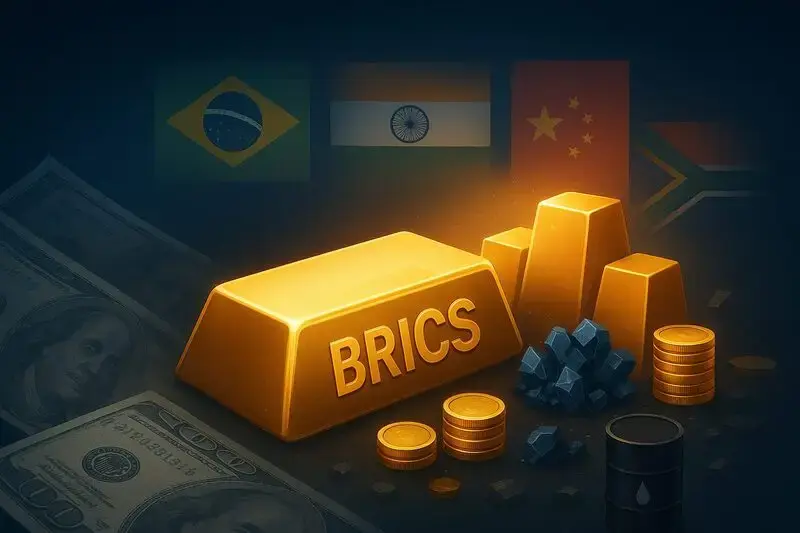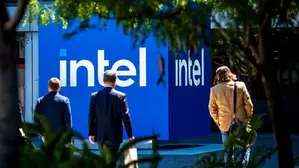The BRICS plan to replace the US dollar gained serious momentum when Russia hosted the 2025 Moscow Financial Forum and announced a dedicated precious metals exchange. This platform allows countries to settle payments in gold, platinum, diamonds, and also rare earth minerals, bypassing Western systems like the London Metal Exchange and SWIFT entirely.
The BRICS plan to replace the US dollar leverages the bloc’s control of 72% of rare earth metal reserves, which is significant. Rather than launching a traditional fiat currency from scratch, the BRICS new currency approach builds on resource dominance and a gold standard that’s backed by real assets. With 68% of trade already bypassing the dollar and the greenback experiencing its worst decline since 1973, the question of whether BRICS can replace the US dollar is no longer just theoretical at this point.
Also Read: ‘Paper Gold’ Era Ends as BRICS Nations Push Dollar-Free Payments
De-Dollarization And New Currency Moves Challenge The Dollar

The Precious Metals Exchange Strategy
The precious metals exchange establishes independent pricing for critical commodities. The London Bullion Market Association has set gold prices through non-transparent British banks for decades, and after the Ukraine war started, this system excluded Russia entirely despite being the fifth largest gold holder worldwide.
The BRICS plan to replace the US dollar includes creating their own exchange based on transparent market trading and actual transactions. This platform works alongside China’s CIPS payment system for instant cross-border settlements without needing SWIFT at all. The exchange volume will make Western commodity sanctions irrelevant, and countries can now access these markets without fear of political weaponization.
Resource Dominance Backs The Shift
BRICS controls 72% of rare earth mineral reserves and processes 75% of them globally, which gives them substantial leverage. The bloc holds 70% of cobalt, 50% of nickel for EV batteries, and 91% of niobium for hypersonic weapons. Brazil produces 98% of the world’s niobium supply right now. BRICS also controls 40% of global oil, a third of grain production, and holds over 12,500 tons of gold.
China is now offering to hold foreign central banks’ gold reserves through the Shanghai Gold Exchange. After the US froze Russia’s $300 billion in 2022, this BRICS new currency framework appeals to nations seeking alternatives. Whether BRICS can replace the US dollar depends heavily on this resource stranglehold and the willingness of countries to shift away from traditional systems.
Dollar Collapse Accelerates
The dollar fell by more than 10 percent in half a year, the worst in six years since the gold standard was abandoned in 1973. BRICS de-dollarization indicate that 68% of trade does not involve dollar and 90% of Russia-China trade involves local currencies. The world dollar reserves decreased to 58, the lowest since 2000.
At the time of writing, gold was trading at $3,900 per ounce, but Goldman Sachs is forecasting a rise to 5000. Saudi Arabia now accepts 12 per cent of oil trades in yuan. The gold standard approach and new currency mechanisms are systematically destroying the dollar dominance. Whether BRICS will substitute the US dollar becomes increasingly plausible as these tendencies are speeding up and the process of de-dollarization initiative in emerging economies gains momentum.
Africa And Emerging Markets Join
The African countries are lining up behind the precious metals exchange and the framework. An Angolan rare earth project called Longanjo valued at $80 million will provide the 5-percent of the world magnet metal requirement, required in electric vehicles and wind turbines. Nigeria has already invested $400 million in a rare earth processing facility and the mining sector of the country will grow to 10 percent of gross domestic product in the next two years. African countries can take advantage of these projects to evade political leverage.
The BRICS proposal of substituting the US dollar will enable wealth to be redirected through growth models instead of Western dominated models and the rising economies in Africa will gain a lot. BRICS are transforming world finance with the intention of replacing the US dollar with the resource-backed system. As control over key materials and de-dollarization stands at 68 percent of trade, the new currency concept takes on a direct challenge to Western financial hegemony.
Also Read: South America Ready To Accept the BRICS Payment System
The move towards a gold standard supported with real commodities revolutionizes the way the world trades, and these measures chip away at the dollar to the point of extinction.






